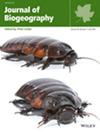Aquatic-terrestrial transition zones contain features essential for many species that often benefit wetland biodiversity. Shallow flood-zone areas and reed beds are indicative of natural wetland habitats; however, how such features affect the native arthropod biodiversity in constructed wetlands is scarcely investigated. We asked how these shoreline features, as well as wetland shoreline properties and grazing management, influence riparian arthropod diversities and habitat specializations.
Constructed wetlands, Sweden.
Araneae, Coleoptera, Diptera.
Taxonomic-, phylogenetic- and trait diversities, along with habitat specialist species richness, were measured in riparian spiders, beetles and selected Diptera in 68 constructed wetlands in two regions of Sweden. We ran structural equation models to estimate direct and indirect effects from shoreline slope, flooded grassland, reed areas and grazing management on group diversities, and used multivariate models to determine drivers on habitat specialist species richness.
Flooded grassland and reed area, along with shoreline slope influenced arthropod diversities, and responses differed between arthropod groups and diversity metrics. Spider trait diversity was greater in wetlands with larger flooded grassland areas, whilst beetle trait diversity was reduced. Spider phylogenetic diversity was greater in wetlands containing larger reed areas and in wetlands with steeper shorelines. However, species richness in predatory flies was greater in wetlands with more gentle shorelines. Grazing management had limited effects on arthropod diversities; however, species richness in wetland specialist and generalist predatory dipterans was greater in the absence of grazers in wetlands with greater flooded grassland areas.
As requirements vary considerably among arthropods, care must be taken when constructing and managing wetlands to benefit arthropod biodiversity. The present results suggest wetlands with a varied shoreline, albeit with greater proportions of flood areas, or multiple adjacent wetlands with varying shores in a wet landscape and a mild grazing regiment, would accommodate a more diverse arthropod fauna.


